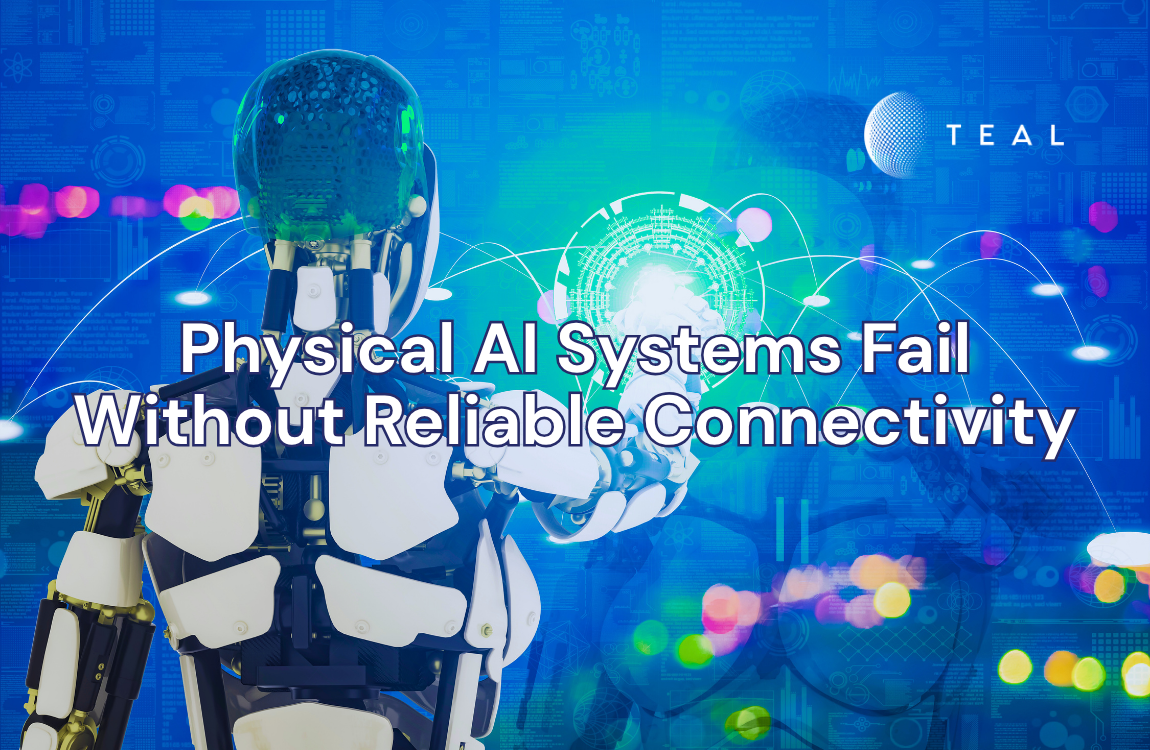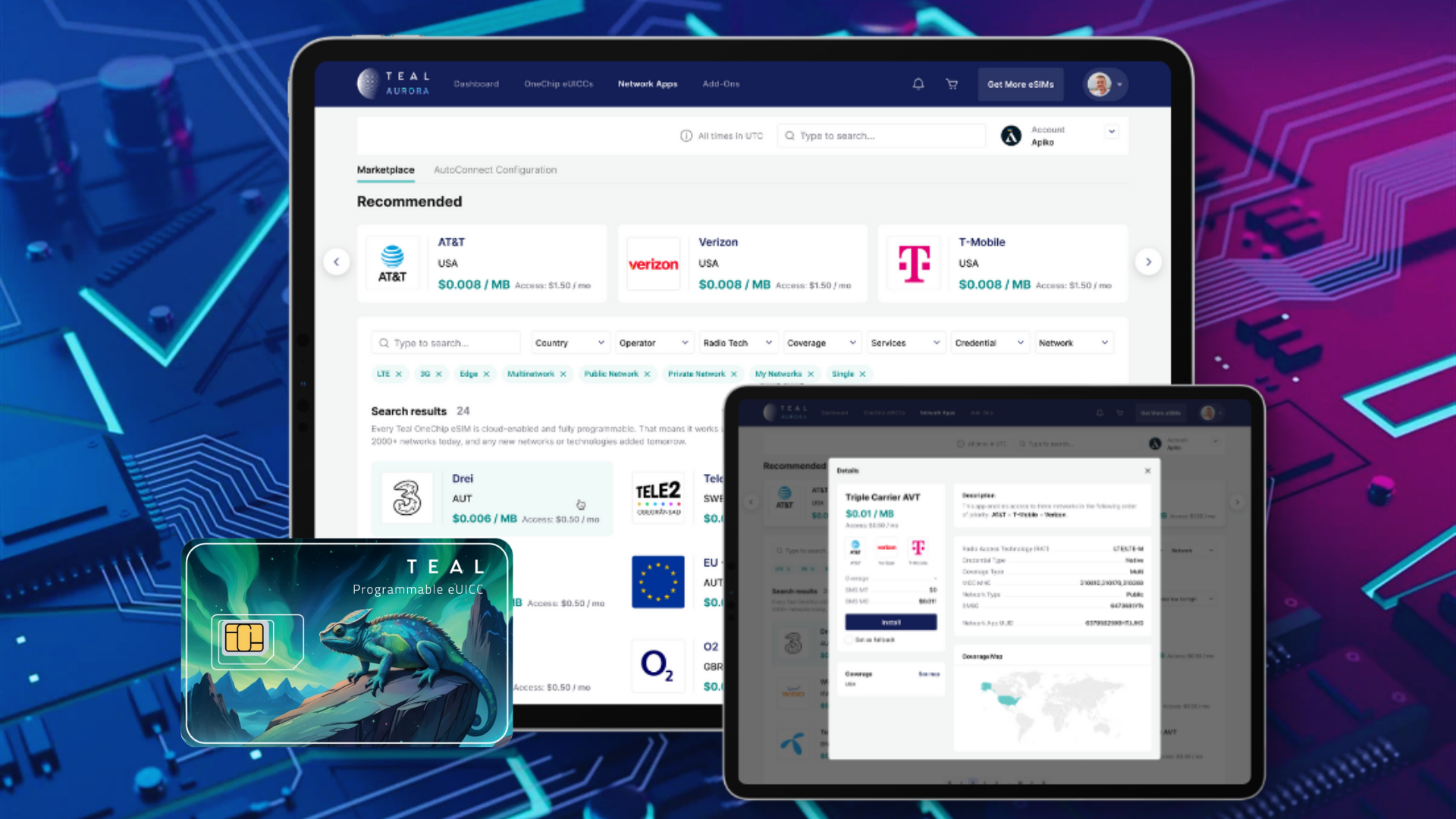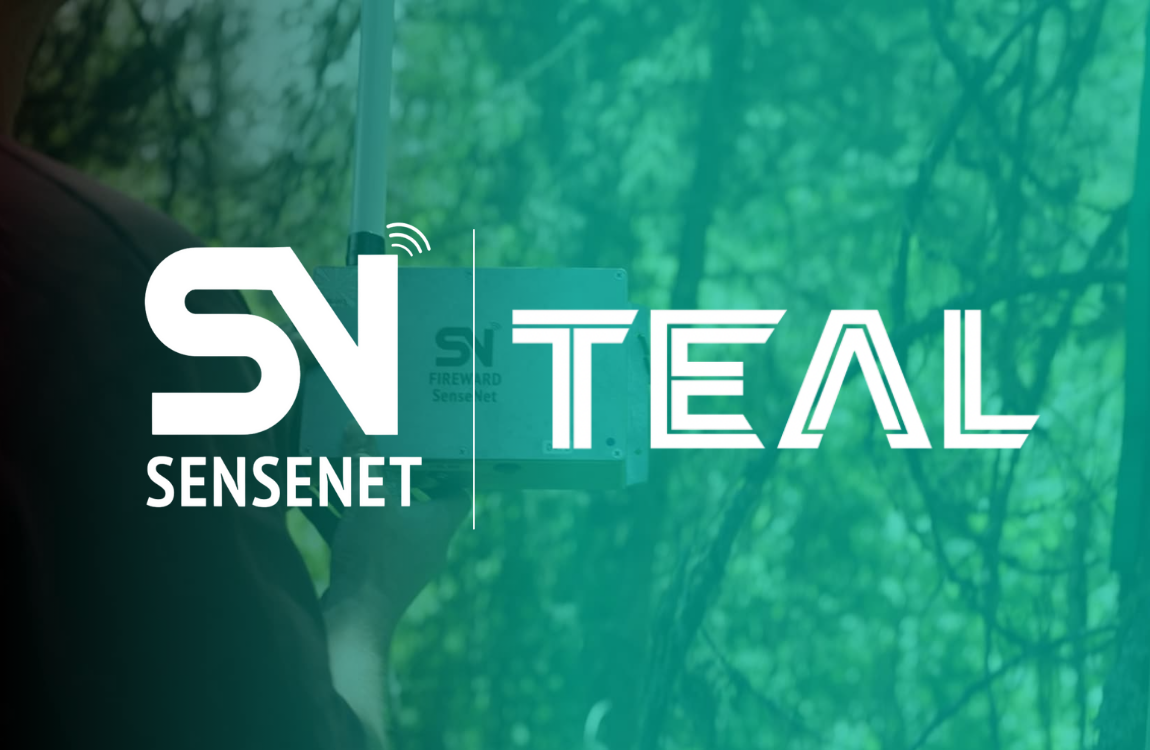Why Physical AI Systems Fail Without Reliable Connectivity

The most advanced autonomous robot becomes nothing more than expensive hardware when it loses connection to the digital ecosystem that powers its intelligence. As Physical AI systems venture beyond controlled laboratory environments into unpredictable real-world scenarios, their success hinges on a critical component that many developers underestimate: robust cellular connectivity.
Physical AI represents the next evolutionary leap in artificial intelligence, moving from screen-based applications to embodied systems that perceive, learn, and interact with our physical world. These aren’t virtual assistants or recommendation algorithms. They’re delivery robots navigating busy sidewalks, humanoid workers in warehouses, and inspection drones monitoring remote infrastructure.
The challenge? These sophisticated systems require constant communication with cloud resources, fleet management platforms, and safety monitoring systems to function effectively. Without reliable connectivity, even the most advanced Physical AI deployment can grind to a halt, turning promising automation into costly downtime.
The stakes are enormous. With the AI robotics market projected to grow from $12.8 billion in 2023 to nearly $125 billion by 2030, companies that solve the connectivity challenge will capture the lion’s share of this explosive growth.
Understanding Physical AI and Its Connectivity Demands
Physical AI systems combine artificial intelligence with physical embodiment, creating machines that can sense their environment, make intelligent decisions, and take meaningful actions in the real world. Unlike traditional software AI that processes data and generates digital outputs, Physical AI systems must navigate complex physical environments while maintaining constant digital communication. 
These systems share several key characteristics that make connectivity absolutely essential:
Multi-Modal Sensing: Physical AI systems integrate cameras, lidar, radar, tactile sensors, and audio processing to understand their environment. This sensory data often requires cloud-based processing for complex decision-making, especially when systems encounter unfamiliar situations.
Real-Time Decision Making: Autonomous systems must respond to changing conditions instantly. A delivery robot approaching a crosswalk needs immediate access to traffic data, weather conditions, and route optimization algorithms stored in the cloud.
Continuous Learning: Physical AI systems improve through experience, but this learning often happens through cloud-based machine learning platforms that analyze data from entire fleets, not just individual units.
Fleet Coordination: As deployments scale, individual robots must coordinate with centralized systems for task assignment, route optimization, and resource allocation.
The Explosive Market Opportunity

The numbers surrounding Physical AI growth are staggering, driven by technological advances and increasing demand for automation across industries.
Morgan Stanley estimates that humanoid robots alone could become a $5 trillion market by 2050, with potentially 1 billion humanoids deployed globally. Even more ambitious projections from Citi GPS predict 1.3 billion AI robots in use by 2035, scaling to 4 billion by 2050.
This growth extends beyond hardware sales. The Robots-as-a-Service (RaaS) model has already reached $2 billion annually with 17% growth rates, making advanced robotics accessible to companies seeking automation benefits without massive capital expenditure.
Industry leaders recognize this potential. Nvidia recently called robotics and Physical AI a multitrillion-dollar opportunity, launching specialized hardware and software platforms specifically for autonomous machines. Venture capitalists like Vinod Khosla predict a “ChatGPT moment for robotics” within the next few years, where humanoids become affordable enough for widespread adoption.
The catalyst for this growth? Reliable connectivity solutions that enable Physical AI systems to operate effectively beyond controlled environments.
Physical AI in Action Across Industries

Real-world Physical AI deployments demonstrate both the technology’s potential and its absolute dependence on reliable connectivity.
Autonomous Delivery Systems from companies like Starship Technologies operate thousands of robots across multiple countries, delivering food and packages directly to customers. These systems navigate sidewalks, cross streets, and avoid obstacles while maintaining constant communication with dispatching systems, mapping services, and safety monitoring platforms.
Warehouse Humanoids from Boston Dynamics and Figure AI perform complex manipulation tasks, working alongside human employees in distribution centers and manufacturing facilities. These robots require real-time coordination with inventory management systems and safety protocols.
Infrastructure Inspection Drones autonomously monitor power lines, wind turbines, and pipelines across vast geographic areas. They upload high-resolution imagery and sensor data to cloud-based analysis platforms that can identify potential issues faster and more accurately than human inspectors.
Agricultural Robotics use computer vision and machine learning to identify crops, apply treatments with precision, and monitor plant health across large farms. These systems rely on cloud-based plant disease databases and weather prediction models to make optimal decisions.
Healthcare Assistance Robots deployed in hospitals and eldercare facilities assist with patient care, medication delivery, and mobility support. They must maintain secure connections to electronic health records and comply with strict data protection regulations.
The Connectivity Challenge: Why Traditional Solutions Fall Short

Physical AI systems face unique connectivity challenges that standard internet solutions cannot address effectively.
Geographic Mobility: Unlike stationary IoT devices, Physical AI systems move across coverage areas, cross carrier boundaries, and operate in locations where Wi-Fi is unavailable or unreliable. A delivery robot’s route might take it through multiple cellular coverage zones in a single trip.
Mission-Critical Reliability: When an autonomous system encounters an unexpected situation, connectivity failure can mean the difference between successful navigation and dangerous malfunction. Emergency stop commands, manual override capabilities, and incident reporting all depend on reliable communication channels.
Massive Data Requirements: Physical AI systems generate enormous amounts of sensor data. A single autonomous vehicle can produce over 4 terabytes of data daily. This information needs continuous upload to cloud processing systems for real-time analysis and decision-making.
Global Deployment Scalability: As Physical AI companies expand internationally, managing connectivity across different carriers, regulations, and network technologies becomes exponentially complex. Traditional connectivity solutions require extensive local partnerships and technical integration work.
Security and Compliance: Physical AI systems often operate in sensitive environments or handle valuable cargo. Connectivity solutions must provide enterprise-grade security, encrypted communications, and audit trails to meet regulatory requirements.
Cellular Connectivity: The Game-Changer for Physical AI
4G/LTE and 5G cellular networks provide specific capabilities that align perfectly with Physical AI requirements.
Ultra-Low Latency: 5G networks achieve latency as low as 1-5 milliseconds, enabling real-time decision-making for safety-critical applications. An autonomous vehicle can communicate with traffic management systems and other connected vehicles with near-zero delay.
Massive IoT Connectivity: 5G supports up to 1 million connected devices per square kilometer, accommodating dense deployments in smart cities, automated warehouses, and industrial facilities without network congestion.
Network Slicing: Operators can create dedicated network segments with guaranteed bandwidth and reliability for Physical AI applications, ensuring consistent performance even during peak usage periods.
Edge Computing Integration: 5G networks support mobile edge computing, bringing processing power closer to Physical AI systems and reducing the need to send all data to distant cloud servers.
Enhanced Coverage: Advanced 5G implementations provide better signal penetration in challenging environments like underground facilities, dense urban areas, and remote locations where Physical AI systems frequently operate.
TEAL’s Network Orchestration Service (NOS): Purpose-Built for Physical AI

At TEAL, we’ve built our Network Orchestration Service (NOS) specifically to address the connectivity challenges facing Physical AI deployments. Our platform provides the foundation that robotics companies need to scale their operations reliably and efficiently.
Intelligent Multi-Carrier Management: TEAL allows you to select the optimal cellular network based on signal strength, latency, and cost considerations. When your Physical AI systems move between coverage areas, our platform allows your devices to dynamically switch between carriers to maintain uninterrupted connectivity.
Global eSIM Technology: Our wholly owned and patented eSIM solution eliminates the logistical nightmare of managing physical SIM cards across international deployments. Switch between global networks over-the-air without touching hardware. TEAL supports SGP.02 and SGP.32.
Real-Time Fleet Monitoring: Track connectivity status, data usage, and performance metrics across your entire Physical AI fleet through our comprehensive dashboard. Identify potential issues before they impact operations and optimize connectivity costs based on actual usage patterns.
Enterprise Security: We implement encryption and security protocols to protect the sensitive data flowing between your Physical AI systems and cloud infrastructure. Maintain compliance with industry regulations while ensuring robust protection against cyber threats.
Scalable Architecture: Whether you’re deploying ten robots or thousands, our platform scales automatically without requiring additional infrastructure investment or management overhead. Focus on growing your business without worrying about connectivity.
Success Stories: Physical AI Companies Thriving with TEAL
Starship Technologies, the global leader in autonomous delivery robots, partnered with TEAL to solve critical connectivity challenges as they scaled operations across multiple countries. Our Network Orchestration Service enabled their robots to maintain reliable connections while navigating complex urban environments, resulting in improved delivery success rates and reduced operational costs.
The results speak for themselves: enhanced uptime, seamless international expansion, and the ability to focus engineering resources on core robotics innovation rather than connectivity management.
Your Path Forward in the Physical AI Revolution
The Physical AI revolution is happening now, but connectivity will determine which companies capture the massive market opportunity ahead. Don’t let connectivity challenges become the bottleneck that limits your autonomous systems’ potential.
Our connectivity experts understand the unique requirements of Physical AI applications because we work exclusively in this space. We’ve helped robotics companies, drone operators, and autonomous vehicle developers overcome connectivity hurdles and scale their operations successfully across global markets.
The question isn’t whether Physical AI will transform industries, it’s whether your company will be positioned to lead that transformation. Reliable connectivity isn’t just a technical requirement; it’s the foundation that determines whether your Physical AI systems deliver on their promise or become expensive reminders of what could have been.
Ready to give your Physical AI systems the connectivity foundation they deserve? Our team is ready to analyze your specific requirements and design a solution that keeps your intelligent machines connected, coordinated, and operating at peak performance.
Take Action: Connect with TEAL Today
Your Physical AI systems represent significant investment in the future of automation. Protect that investment with connectivity infrastructure designed specifically for autonomous systems operating in the real world.
Book a free consultation with our connectivity experts today. We’ll evaluate your current connectivity challenges, assess your scaling requirements, and design a comprehensive solution that grows with your business.
The Physical AI market opportunity is enormous, but it belongs to companies that solve the fundamental challenges first. Connectivity is challenge number one.
Recent Posts
Introducing TEAL Chameleon eSIM: The Most Adaptive eSIM Ever Built
Teal Communications Staff2025-12-03T23:14:56+00:00
TEAL Ranked as the Fastest-Growing Company in the Pacific Northwest on the 2025 Deloitte Technology Fast 500™
Teal Communications Staff2025-11-19T04:37:11+00:00
SenseNet Partners With TEAL to Expand AI-Powered Wildfire and Gas Leak Detection Globally
Teal Communications Staff2025-11-12T17:24:11+00:00




